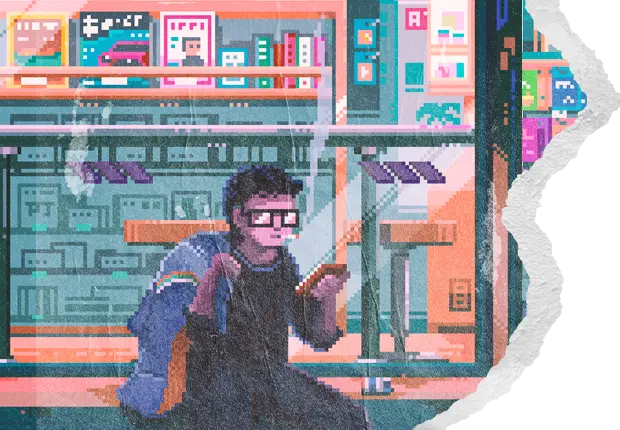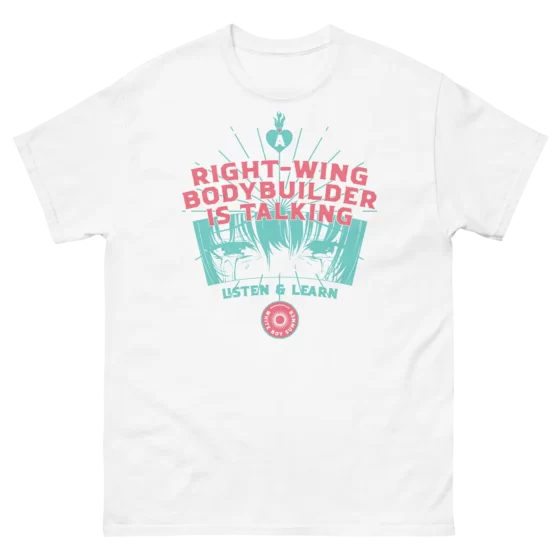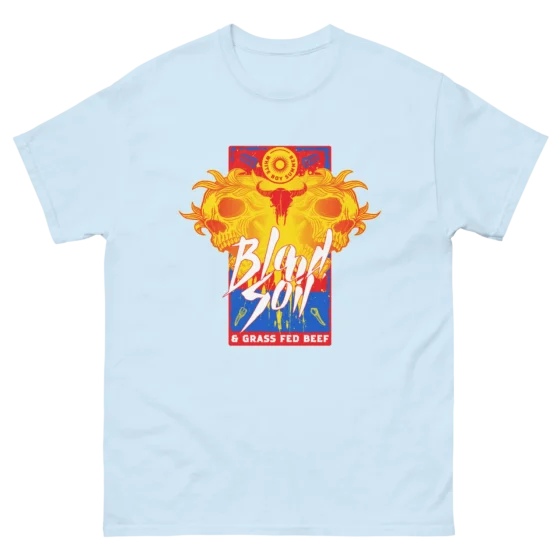A Requiem for Café and Bookstore Culture
I came of age in the 1990s and was a denizen of Milwaukee’s coffee shops. The first one I ever went to was called Gil’s Bongo Lounge on Downer Avenue. It was an old two-story brick building that served coffee downstairs and food upstairs. Not restaurant food, mind you, but coffee-shop food: delicious sandwiches and tasty bakery items that allowed you to drink a lot of coffee without getting gut-rot. The whole place was populated by various hipsters, burnouts, intellectuals, artists and other assorted riff-raff that I thought were a whole lot older, wiser and cooler than my teenage self.
I first started going there with my girlfriend, who introduced me to the place. Most of the time we just drank coffee on the first floor, which was a grade below the upper level in coolness. I barely felt cool enough to be there at all, being a naive high-school kid from the outlying suburbs, now surrounded by all these city people. But soon we started venturing upstairs, where enormous speakers adorned the back walls and blared out the sounds of Soul Coughing, A Tribe Called Quest, and the Pulp Fiction and Reservoir Dogs soundtracks; where dreadlocked, tattooed waiters weaved in and out of conversations and cigarette smoke carrying plates of food and huge mugs of coffee to keep the vibe going and everyone’s buzz maintained. It was loud and smoky, full of lively people discussing art and ideas and life. It was pretty much the coolest place I had ever been.
After high school I went to collitch at UW-Milwaukee and lived near campus, so I spent even more time at Gil’s, as well as on the second-floor lounge of the university Student Union, which at that time was the smoking lounge and was basically a de facto giant coffee shop. (I wonder what it took to get rid of the tobacco smell after they banned smoking there some time later—for decades the whole floor was one giant cloud of smoke.) New books and new friends were opening my mind to all sorts of ideas, as much as or more than any of my classes and professors, and coffee shops were where we went to discuss and debate philosophy, politics, religion, literature, film, music and whatever else we were interested in, often trying to sound like we knew a lot more than we really did. I remember long conversations in Gil’s and other spots debating the merits of the existentialism of French writers like Camus versus the quasi-Zen mysticism of Jack Kerouac and the Beat Generation writers, not really understanding either one. It’s easy to chuckle about it now, but as aspiring young writers, artists, philosophers—as young human men—we weren’t just arguing abstract ideas, but trying to formulate how we would approach the rest of our lives, to decide how we would live and what our values would be.
Later I started going to another coffee shop called Comet café. Comet had shiny metal tables that looked like they were made from recycled polished sheet metal, and strong coffee that tasted like it was brewed with dirty dishwater. If you came in with a big group of people, it was easy to push those sheet-metal tables together so you could all sit together. And like Gil’s, Comet had coffee-shop food, the best of which was the Buttafuoco sandwich: lettuce, tomatoes and giardiniera peppers smothered under about two pounds of melted cheese, named after a New York auto mechanic who was then current in the tabloids because of his lady troubles. I spent a lot of time in Comet, showing up before morning class to finish last-minute homework, or going after class and staying until they closed at midnight. I don’t know how I could drink endless cups of coffee (25¢ refills) into the late evening and still fall asleep back then—youthful metabolism I guess.
Maybe it’s just my personal experience and the amount of time I spent there, but I met more characters in Comet than anywhere else. It was mostly filled with young people like myself, trying to look hip and cool such as by smoking the Indian bidis that they sold for $1.50 a pack, or imported Gauloise cigarettes from Koppa’s grocery store across the street, or rolling your own from a pouch of Drum. But there were a few older people who hung out there as well, and they were always unusual, because hanging out in a coffee shop full of college kids if you are not one of those college kids is unusual. There were a couple of older professors from UWM who liked to hang out there to try to pick up students. There was a guy named Tom who chain-smoked unfiltered Camels, but would only smoke the first third of the cigarette before he would stamp it out and then light another one. I figured he must be rich to waste so much tobacco like that. He said he was working on a screenplay and would be leaving Milwaukee when it was finished, though I don’t recall ever seeing him writing anything. One time he asked me what I was reading and I showed him my copy of The Tao of Natural Breathing. (I was just starting to get into Eastern mysticism.) “Good. Good,” he said nodding his head approvingly as he took a drag on his unfiltered Camel.
The best thing about Comet, besides the Buttafuoco and their amazingly good chili (secret ingredient: peanut butter), was its location, with a laundromat on one side and the best used bookstore in Milwaukee on the other. You could put in a load of laundry, browse for some good books, and then sit down to read with a few cups of coffee while waiting for your clothes to dry, which made the otherwise tedious task of doing laundry something to look forward to. The bookstore was called Constant Reader. It was run by an older man, maybe in his fifties or sixties, whose name I never caught despite going there for years. He had a quiet but strong presence that radiated throughout the whole store, such that it always felt peaceful in there. But if you engaged him in conversation, you got the feeling that he knew a lot more than he usually let on. In addition to a great selection of books, including some very obscure titles that I’ve never seen in used bookstores anywhere else, Constant Reader also had the best discount rack, which was right by the door as soon as you walked in. Most bookstores use the discount rack for water-damaged books and old student copies that are marked up with underlining and highlighting on every other page, but Constant Reader always had some real gems on theirs, and for only a dollar. I got my first Evola books from Constant Reader sometime in the late 2000s—Introduction to Magic for the princely sum of $3.00, and a copy of Men Among the Ruins which had been signed by Michael Moynihan. (How did this end up there, and why would anyone get rid of it?)
There were many other coffee shops besides Gil’s and Comet, all independent and unique. There was Brewed Awakenings on Brady Street, where I once got in trouble for smoking in the non-smoking section between I was too drunk to realize where I was. Lava Java was a cozy little spot in Riverwest that one of my philosophy TA’s introduced me to. Fuel Cafe, also in Riverwest, was known as the most hardcore coffee shop, because it used to be a punk-concert venue called the Odd Rock Cafe back in the 80s, and it was in a rather sketchy location where you might just get mugged—more than one of my friends did near there. The local free newspaper, the Shepherd Express, used to have Best Of Milwaukee polls every year, in which Fuel would always get voted the Best Place to Smoke, which indeed it was. Just going in there for a cup of coffee to go would make your clothes smell like a combination of cigarette smoke, coffee and grease.
There were also many other bookstores around Milwaukee at the time. There was another used bookstore right down the road from Constant Reader in the Prospect Mall, which I think was called Recycled Books & Music. On Brady Street, across from Brewed Awakenings coffee shop, was a little place called The Red Wheelbarrow. Go downtown and you could find the appropriately named Downtown Books, which at one time had three different locations in close proximity to each other. Right on the corner of Water and Wisconsin, Milwaukee’s ground zero, was Harry Schwartz Books, which had three interconnected rooms and was all around the most beautiful and upscale bookstore in Milwaukee. It was not a used bookstore, but they were the only place I knew of that did used book searches in the pre-internet days—you gave them the title and author of the book you were looking for, and through some mysterious and perhaps paranormal method, they could usually find it for you, though it may take weeks or even months, and it was likely to be expensive.
My favorite used bookstore was Blake Books, which used to be on Milwaukee Street between Wells and Wisconsin Avenues. Later that block became prime real estate because of all the beautiful old buildings it contains, but in the 90s it was sorely under-appreciated and under-developed, and probably a lot more affordable such that a used bookstore could actually afford to be there. Blake Books was the sort of old bookstore that made you feel like you were walking into another time and place, perhaps some old bookshop in 19th-century England. The walls and shelves and most of the book spines were dark brown, with dim lighting. The owner was a nice older man with long gray hair in a ponytail who was always very friendly. I found so many rare books at Blake’s that it’s mind-boggling. I remember finding a first edition of John Fowles’ The Aristos there, which is rare because he re-wrote it after being accused of being a crypto-fascist.
If you ventured a little further up Wisconsin Avenue, there was Schroeder’s Books on 8th and Wisconsin, near the public library. Schroeders was half used bookstore and half old Times Square smut shop. It was housed on the ground floor of an old mixed-use apartment building that has long since been torn down. Schroeder’s was the most disorganized bookstore I’ve ever seen, with stacks of old books and magazines strewn about here, there and everywhere in no discernible order, together with old porno magazines which weren’t even separated from the other material. So any given stack of books might go something like this: Psychology textbook; battered copy of Jonathan Livingston Seagull inscribed to the previous owner with some cheesy 70s shit about finding yourself; June 1981 Hustler; Field Guide to Michigan Trees; February 1967 Good Housekeeping; October 1976 Playboy; How to Win Friends and Influence People. If you were looking for something specific, forget about it—go to one of the other shops. But if you felt like looking for a needle in a haystack, you might just find a gem—and you got to look at naked women in the process. And as for characters, the lady who ran the place absolutely took the cake. Dressed like a bag lady with an eccentric but sweet personality, I remember her very fondly for never carding me when I bought porn mags there before I turned eighteen.
Downtown also had Milwaukee’s largest and most famous used bookstore, Renaissance Books, which was always a treat for book lovers and seekers after old wisdom. They advertised five floors of books in a thoroughly dilapidated old building, but I only ever saw three, not including the dank and eerie basement full of old magazines. The building was so old and disused that you felt like it might collapse at any moment, which added an air of danger and excitement to the hunt for treasures there. The floors were uneven, the walls were cracked, the stairs creaked under your feet like you were in a horror film, and the paint job was from 1910—you felt a bit like Indiana Jones. I remember once spending the whole day there with a friend digging through their collection of 1950s and 60s mass market paperback editions, each of us coming back with a backpack full of musty old books—Thomas Merton, the Tao Te Ching, Ortega y Gasset, Ivan Illich, Jacques Ellul. I remarked to him that maybe we liked books a little too much. He said, “Maybe. But, these books have the ideas that are going to save the world.”
Believing that books and ideas can save the world seems like an artifact of youthful naivete, and a particular type of bookish youth at that. But I’m very grateful to have had an environment in which ideas could be encountered, debated, tested, accepted, or rejected—with real people, and real social interaction. The coffee shops and bookstores of Milwaukee formed a kind of network. On any given day you had your choice of at least a half dozen locations, either to sit and read and talk, or to search for new ideas to sit and read and talk about. I had a few good professors at university, but most of my education came from the bookstores and the coffee shops.
If you’ve ever seen the movie Slackers, that’s basically what 90s coffee-shop culture was like. The film was set in Austin but it may as well have been Milwaukee, or any other smaller city or college town in America at that time. To be sure, Gen X did not invent coffee-shop culture. Rather, as with so many other things, I think we were the last generation to really experience it. There is of course a long-standing tradition of intellectuals, writers and artists spending time in cafés, smoking and drinking and socializing, going back at least two hundred years. Virtually every American and European city with any kind of art scene has had its famous cafés, from the Cabaret Voltaire in Zurich where Dada was born to the Café de la Paix in Paris where Gurdjieff wrote his magnum opus All and Everything. Cafés were the original “incubators” before that rather stupid term was applied to collective workspaces. When the vibe is right, a good café has an energy that is very much conducive to creativity, conversation and fun.
What makes the vibe? For starters, a good location. Busy areas downtown are good because it’s easier to draw more people. On the other hand, there is something to be said for out of the way places that are like secret enclaves, provided enough people know about it to actually show up. Either way, the place needs to have the right people—creatives and crazies (and, hopefully, art hoes—but then I already said crazies). There is some overlap between those two groups and they tend to feed off of each other’s energy. Among the creatives there should be a mix of writers, painters, and musicians, with a dose of intellectuals and religious lunatics thrown in for good measure. There can be a mix of young and old, but the soul of the place must be the young—a café can be a scene without olds, but without the young it’s sterile. The café can be a place for these people to hang out into the evening, or to recoup their energies in the morning with breakfast and wake-up juice. Finally, it goes without saying that a café needs coffee. It doesn’t have to be gourmet but it ought to be a step above the cheap shit they serve at the diner. The diner gives you free refills before you even ask for them, because they’re trying to get rid of that stuff. Coffee-shop coffee ought to be good enough to justify charging for refills—but the refills should be affordable, not just buying another cup of coffee at full price or giving you some token ten-cent discount for reusing the cup because “it helps the environment.” And one more thing: a good café scene needs smoking.
Jim Jarmusch made a pretty good film about 20th century café culture called, appropriately enough, Coffee and Cigarettes. If he made that film today, he’d have to call it just Coffee because you can’t smoke in coffee shops anymore. Maybe this is healthier, but there is no doubt that intellectual and artistic pursuits have suffered from the removal of this stimulant combination, and the environs in which they were traditionally imbibed, which inspired them for so long. Can anyone imagine Kerouac and Ginsberg and those guys sitting around in a Starbucks sipping pumpkin spice lattes, occasionally interrupting their frantic discussions and heated debates about the meaning of Dostoevsky or the Diamond Sutra to put on their coats and step outside and down the block for a smoke? No—it kills the vibe, which is what the smoking ban effectively did to the whole café culture.
The smoking ban was the first blow. I was in New York in the mid 90s when it first went into effect there. I went to Cafe Reggio in Manhattan with my friend and everyone inside was still smoking anyway, the only difference being that the staff gave you an empty saucer to ash in instead of an actual ashtray. No one took the ban seriously. Not smoke in a coffee shop? You must be joking, Mayor Giuliani. Please go back to fighting real crime. But eventually, the ban was enforced. Eventually, it spread to other areas, including Milwaukee. And now, it’s not even the “new normal” anymore, it’s already the old normal.
Three things killed the old café culture that I loved: the smoking ban, Starbucks, and computers. Around the same time as the smoking ban, Starbucks went from being a local Seattle coffee chain to being ubiquitous in American cities and suburbs. I don’t remember if there were already Starbucks in Milwaukee in the 90s, I just know that if there were I never went there. You couldn’t smoke, the coffee was burnt shit compared to my local favorites, and it was an utterly sterile, artificial environment. No vibe, no charm, no energy. They even advertised it that way: a “quiet place” to sip your latté in peace. But somehow, this silly corporate imitation of real coffee shops became the model for all coffee shops, such that even the independent cafés have come to feel more and more like Starbucks.
And then there’s the computers, which killed books and bookstores in two ways. First, the rise of Amazon killed brick-and-mortar bookstores, including used bookstores, such that now Milwaukee has perhaps one tenth of the used bookstores it had in the 90s. Used bookstores are much more important than new, because the randomness of used bookstores introduces an element of magic that new bookstores can never have. You never know what you might find, whereas in new bookstores—especially the “indy bookstores” which Hakan rightly and savagely criticized in a famous tweet some years ago—you always know exactly what you will find, and what you won’t. I mentioned before finding Evola books at a used bookstore—try to imagine that happening at Barnes & Noble or an “indy bookstore.”
The second way that computers changed café culture was through the rise of the portable laptop. One of my friends during those years was another bookworm and aspiring philosopher like myself who used to sit in a booth at Fuel Cafe every day from morning to night with a pile of books on his table, like it was his office. We first met outside the cafe through some other events, but if we hadn’t I’m certain we would have become friends anyway, because like me he always had his pile of books facing outward, so that anyone who was interested could see what he was reading and studying and strike up a conversation with him. We had endless talks about Nietzsche, Buddhism, anarchism and all manner of things. We both liked books from Loompanics and placed a shared order from their catalogue to save money on shipping.
But then he became interested in computers. There was a new computer-themed coffee shop called Node that opened up on North Avenue around this time, and he migrated there from Fuel. I went there once to visit him. When I walked in, I saw that almost no one was talking—everyone had a laptop open on their table and was absorbed in their screen. There was no longer a stack of books on my friend’s table, just the machine. The whole place was profoundly disturbing to me. When I remember it now, it seems like an omen, a portent of what was to come.
Amazon killed most of the bookstores in a span of about ten years. Starbucks killed the indy cafés during the same time period. The focus of café life is now neither conversation nor reading, but screens. There is a distinct difference between sitting alone at a table with a book, and sitting alone with a computer or phone. The book’s cover faces outward and there’s always a chance that someone will use it to strike up a conversation with you, whether welcome or not. But a person absorbed in a screen is a remote island, and a person taking selfies at a café is urban blight. Writers and wannabe writers scribbling away intently in notebooks in busy cafés is a standard trope—Moleskine has made a business of evoking this tradition with its signature, overpriced journals. A coffee cup stain on a notebook or novel adds character and charm, but a coffee spill on a laptop spells disaster. Typing machines are older than computers, but who ever brought a portable typewriter to the coffee shop? I know, of course, that computers and the internet are great tools for research and writing—I’m writing this article on my laptop—but they are also the chief culprits in having destroyed this old café and bookstore culture.
The silver lining on this dark cloud is that the internet has streamlined the information-finding process. You’re more likely to find out about some cool rare and forbidden book on the Chans or on Twitter than from some real life conversation. And you’re more likely to just download a PDF scan or perhaps order the cheapest copy on AbeBooks than you are to actually scour the few remaining used bookstores for it. The result of this is that young people today have the potential to become a lot smarter a lot quicker than most people in my generation. Before the internet, if you didn’t happen to chance upon that-book-that-changed-your-life in a used bookstore—the way Nietzsche found Schopenhauer—it may as well not have existed. Maybe your friend had a copy that he could lend to you, or maybe you just heard about it and always had it in the back of your mind whenever you went to the bookstore, hoping every time that by some stroke of luck today would be the day you would actually find it.
The internet has also allowed people of like mind to find each other in new ways, and to draw from a much larger pool than whoever happens to go the same coffee shop as you. I remember the old cafés fondly, but most of the people I knew from those days never did much of anything besides hang out. No great novels or films or paintings or new political movements emerged from that scene. Small town scenes are often like that, because the really hungry and talented people leave for the big cities. And Milwaukee, it must be said, is a uniquely alcoholic and stagnating place, which is why I left in 2005, never to return. Today I have friends online who have written amazing books, made spectacular videos and films, who draw incredible comics and are funny and insightful as hell. I can’t help but imagine how great it would have been to be able to find such a group of high-quality people when I was younger, and I can only hope that sensitive young men today can use these networking tools to forge real friendships and alliances. Maybe they can even find a place somewhere, someday, to sit down together for coffee and cigarettes.
































